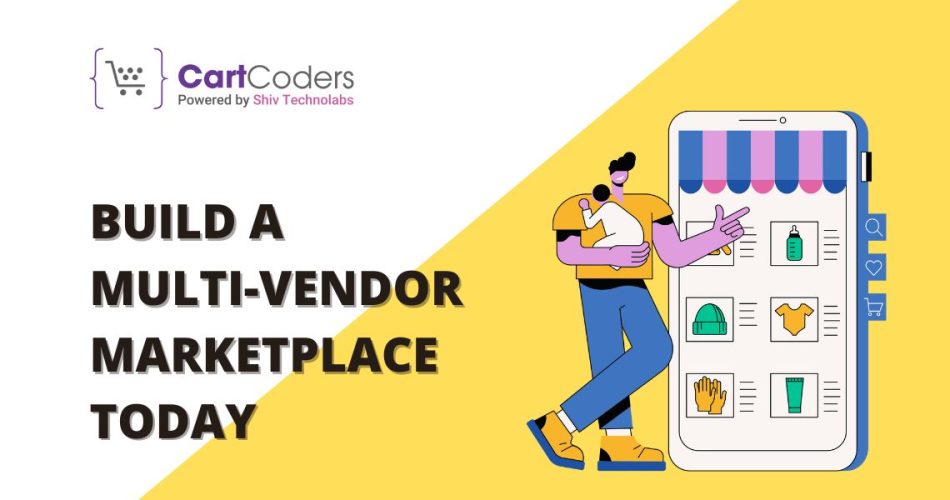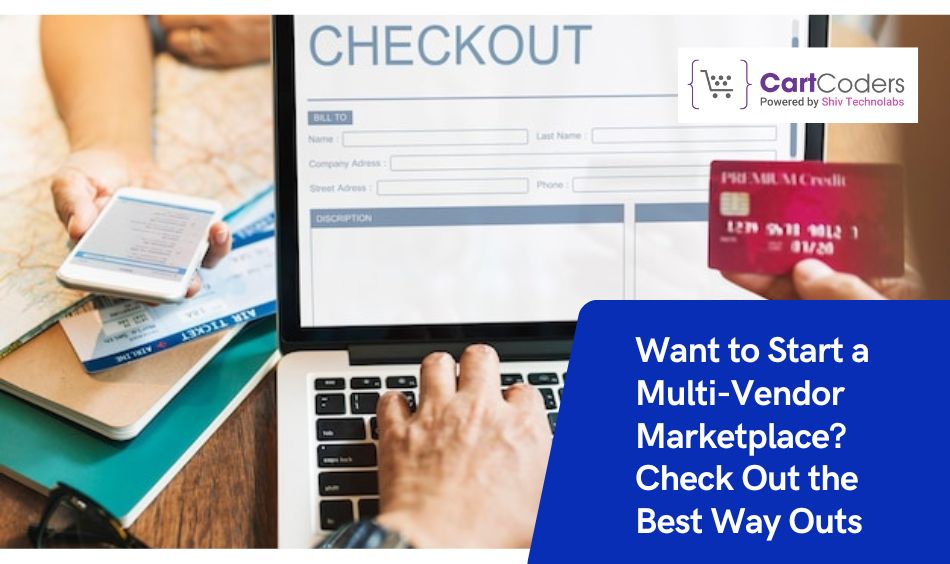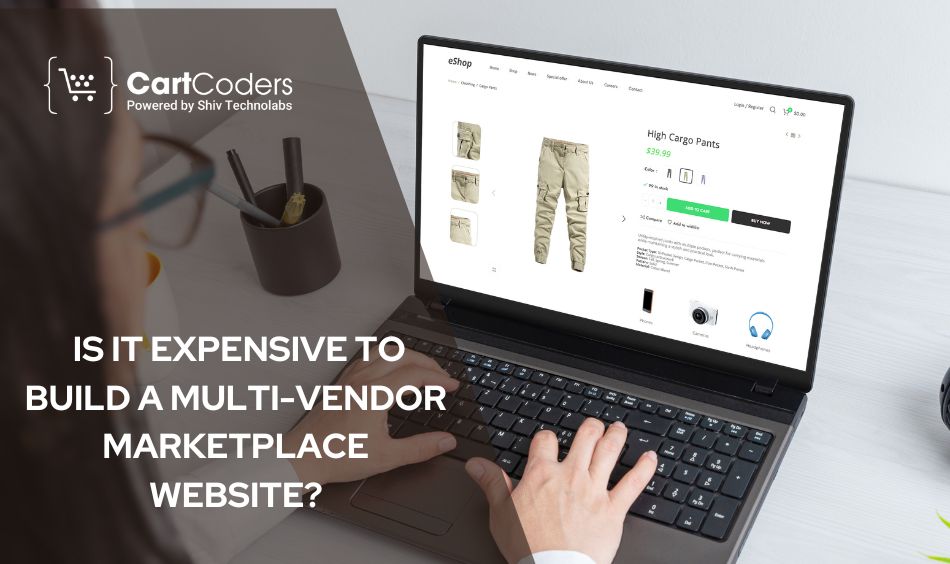Custom Engagement Solutions
Unlock tailored solutions with a free, no-obligation strategy session.
Expert Developers & Engineers on Demand
Scale Your Team with Skilled IT Professionals
Expert Guidance for Digital Transformation

Have you been thinking of starting an e-commerce business? Well, you are not alone. Even though the world has become fast-paced, it is easier to earn online. The need to undergo a hassle to create an e-commerce platform is long gone. You can create a stable e-commerce marketplace in less time.
Just with little assistance from an expert, building an e-Commerce marketplace is a few clicks away. Are you wondering where to begin? There is no need to look anywhere else as you are here. All you have to do is go through this guide to discover how you can create a competitive multi-vendor marketplace in no time.
Before you create a Multivendor Marketplace for Shopify, let’s understand what it is in the first place. As many have a slight idea of it, knowing what it is in reality can help more. Multi-vendor websites have multiple vendors contributing to the supply.
They are different from the regular e-commerce platforms that you may have seen as they come with a single vendor. These single vendors handle all the activities like sourcing, pricing, etc. On the other hand, a multi-vendor marketplace is run by a group of merchants who offer their goods and services for sale to the targeted customers.
Wondering if there are different types of multi-vendor marketplaces available? Before you choose an expert to build an E-commerce Marketplace, let’s walk through the types of it that exist.
A product multi-vendor Marketplace can be understood as shares of tangible commodities by different vendors.
The owners of marketplaces can give users access to features like price comparison, customer rating, in-depth product description and more. An example of a multi-vendor product marketplace would be Amazon, eBay, etc.
The rental-focused marketplaces are created where vendors can rent out their products to the customers. These may include clothing, event equipment and much more.
The digital product marketplace has its sole focus on selling digital products. These may include items like ebooks, online courses, videos, music, etc.
Another type that comes in is the service multi-vendor marketplace. This helps the buyers and service providers to transact services.
No shipping choices are needed for a physical goods marketplace. However, handling the “return” of digital products requires implementing highly specialized policies. An example of this would be services like Uber.
As days pass, creating a multi-vendor marketplace website has become the first choice of many businesses. This is because it offers the chance to stay competitive. The need for initial inventory is eliminated and the potential for strong networks increases.
It gives a chance to the entrepreneurs to transform their ideas into reality. As building a multi-vendor marketplace can demand a lot of work, you can come to CartCoders. Within no time, we can transform your existing online store into a fully functional multi-vendor marketplace.
The decision to create a Multi-Vendor Marketplace for Shopify depends on the benefits it offers. Isn’t it? Why would you want to invest in something that does not give any better return? As you proceed to make an informed decision regarding creating a multi-vendor marketplace platform, let’s take a look at the benefits it offers.
When you create a multi-vendor marketplace, it brings several sellers on board. As a result of this, businesses get a chance to curate a range of goods and services. Due to this, the product catalogue becomes competitive and comprehensive. Also, it attracts a larger consumer base.
If your business focuses on scalability, then opting for a multi-vendor marketplace website is the best thing to do. This is because the multi-vendor marketplace platform is known for its scalability. As the number of sellers and products increases, the platform can grow with that. This also showcases that such a marketplace can evolve accordingly and meet the changing demands of not only the sellers but customers as well.
By creating a multi-vendor marketplace website, businesses can expect their upfront costs to be reduced. Also, the risk involved in inventory management can be prevented. This happens because there are already available goods from different sellers. The need to separately create and acquire these goods is eliminated.
When an independent platform like a multi-vendor marketplace website is provided, it gives a chance to individuals to foster entrepreneurship. This supports small businesses and helps them to introduce an innovative element to the marketplace.
As there are multiple sellers on board, it brings an opportunity to increase revenue streams. Yes, businesses can access a range of revenue streams like commission fees, subscription models and much more. With a diverse source of income available, it helps to create a resilient business model.
Do you have new product categories available to introduce to the marketplace? Well, this can be done using the multi-vendor marketplace website. The fear of damaging your store while introducing these new product lines is reduced.
The customer experience can be expected to be enhanced through a multi-vendor marketplace website. Simply because it turns out to be a one-stop solution where consumers can get anything they need while shopping. Offering a centralized shopping destination brings convenience for the customers and encourages repeat business.

If you think that creating a multi-vendor marketplace website is the best decision, then why waste time? Here are a few tips given below that you can follow to begin your journey.
The first step you must take to create a multi-vendor marketplace is to pick a business niche. You should prefer to choose the one you are passionate about. Following this, look for its demand in the market and how profitable it can turn out to be.
While choosing a business niche, make sure to understand your rivals. Take into consideration what they are doing and the level of success they have already achieved. Then pick a niche accordingly. However, it is suggested to pick the one that has low competition in the market as you start. But if you think you can handle high competition, then go for it.
In this step, you must get a domain first and pick a platform that you find suitable. Now you can proceed with setting up your store and hosting it. For expert assistance, you can rely on CartCoders. We are the leading professionals who can help you build an E-commerce Marketplace that will be both secure and fast.
As your store sets up, you can start looking for vendors instead of wasting much time. This would ensure that your store is operational without any delay and is making desirable profits at the start.
Many businesses do not realize that a good delivery mechanism is the soul of success. Without it, any business can eventually fail. This is why make sure that you have planned a great delivery mechanism and return system for your customers.
Once your store setup is complete, it is now time to market it. Simply because when you market the business, it will gain the attention of the targeted audience. Hence, do not hesitate to try both free and paid marketing options.

If you are worried about the cost it may be needed to create a multi-vendor marketplace website, then know that the amount is not fixed. There are a range of factors that may influence the cost of building a multi-vendor marketplace website. Some of these factors include the following
Also, the type of professional you are choosing and their level of expertise can influence the rates. Regardless of the price you pay, keep in mind that multi-vendor e-commerce websites can transform your business success. Not only can it help to drive growth but also brings profitability.
Now that you know how creating a Multi-Vendor Marketplace for Shopify can transform your business, you may be eager to start it. To ensure it turns out to be a success, you can come to us at CartCoders.
We are the top platform where we enable owners to list and manage multiple sellers as well as products from one storefront. With a team of experts, our services can improve your customer retention rates and reduce overhead burdens. Having us by your side, you can expect to gain unimaginable profits without breaking the bank.
Projects delivered in 15+ industries.
95% retention rate, building lasting partnerships.
Serving clients across 25+ countries.
60+ pros | 10+ years of experience.